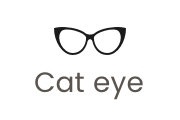Maybe it doesn’t mean anything.
Maybe it’s about a feeling.


There’s no such thing as “indie sleaze.”
When fashion writers and Tiktok commentators try to put words to the trend, they reach for references as disparate as Zooey Deschanel’s twee Peter Pan collars, American Apparel’s famously scandalous ads of women in barely-there 80s gym shorts and knee socks, Skye Ferreira’s cheap aviators and slept-in grunge make-up revival, and Alexa Chung’s Brit-pop-influenced looks. What brings this collage together? Maybe, as Liz Doupnik writes for The Zoe Report, it’s the “I’m with the band” look – but which band? Writers wax nostalgic about indie pop like Lorde’s iconic Pure Heroine, electronic music like La Roux and Klaxons, rock such as the Yeah Yeah Yeahs and The Strokes, and alt-rap like Azealia Banks – all popular around the same time, sure, but not part of one unified subculture. So what is it that has convinced so many of us (at least those of us who are online right now) that there is something we can call “indie sleaze”? We think it’s about a feeling.
Lycra miniskirts, Ray-Ban Wayfarer dupes, Shutter Shades, and Tumblr-core
In 2010, walking into an American Apparel was like stepping through the gates of heaven. Mirrored walls; neon lights; everything arranged in rainbow order, kindergarten-style; the incongruous display of vintage acetate glasses and Casio watches beside the gold Lycra leggings; the euphoric chorus of “Electric Feel” echoing from the speakers. The clothes celebrated both androgyny and sexiness. Everything danced on the sweet edge between irony and earnestness.
Who doesn’t want to feel that release right now? Unbelievably, it’s been five long years since the beginning of the pandemic, which left many people feeling like they missed the experience of being young, wild, and free. You might think we would have returned to hedonism with a vengeance when lockdowns were lifted, but bewilderingly, every new trend seems to emphasize our ability to control ourselves, not to let loose. We have never heard the word “clean” so many times in our lives – clean beauty, clean eating, clean girl aesthetic. It’s hard to imagine a further cultural moment from the one where we were all punching the lenses out of 3D movie glasses and wearing shutter shades to the club.
The paradox of the “indie sleaze revival”
There is no way to artfully craft a style that was always just thrown together. Smudging your eyeliner before the party isn’t the same as forgetting to take off your makeup and wearing it the next day. The leopard print coats that are prized by “the revival” were originally dug out of the thrift store bins and thrown on on the way out the door, not purchased at a new and carefully curated thrift on the Lower East Side. The ubiquitous Ray-Bans weren’t just for style – they were covering bloodshot eyes after dancing all night.
As Mavis Parks writes for Sartorial Magazine, a teenager at the time imagined “[...] how great it would be as a 20-something-year-old in New York City — to wear those American Apparel disco shorts your mother says are too revealing, to finally see the Arctic Monkeys live.” In other words, the fashion and the lifestyle have always been inseparable. As our for-you-pages become saturated with influencers promoting the same products, wearing the same outfits, and speaking with the same inflection, authenticity has become a precious commodity, and we think this is what is drawing us back towards an aesthetic that flies in the face of mass production. What would it mean in 2025 to authentically embrace the unselfconscious, indulgent, debaucherous spirit of the decade we just left behind? Could this be what we need, now more than ever?


Find Your Look
The party isn't over, yet
We have always returned to previous trends, picking and choosing what makes its way back to the present, but style isn’t just about clothing. It’s an aesthetic response to the conditions of our time. And after a sickening decade of prescriptive wellness culture, clean girl aesthetics, and relentlessly curated and disingenuous Instagram perfection, the indie sleaze style, if we can even call it that, comes to refuse polished. It leans into chaos and recalls how being a little unhinged can be a survival tactic in the face of uncertainty and toxic positivity.
“Indie sleaze” is not a trend returning inevitably through the trend cycle. It’s an imperfect attempt to capture an imperfect feeling we are desperate to feel again: that we can stay out all night being drama queens in trashy sunglasses who smoke as much as our hearts desire.










































